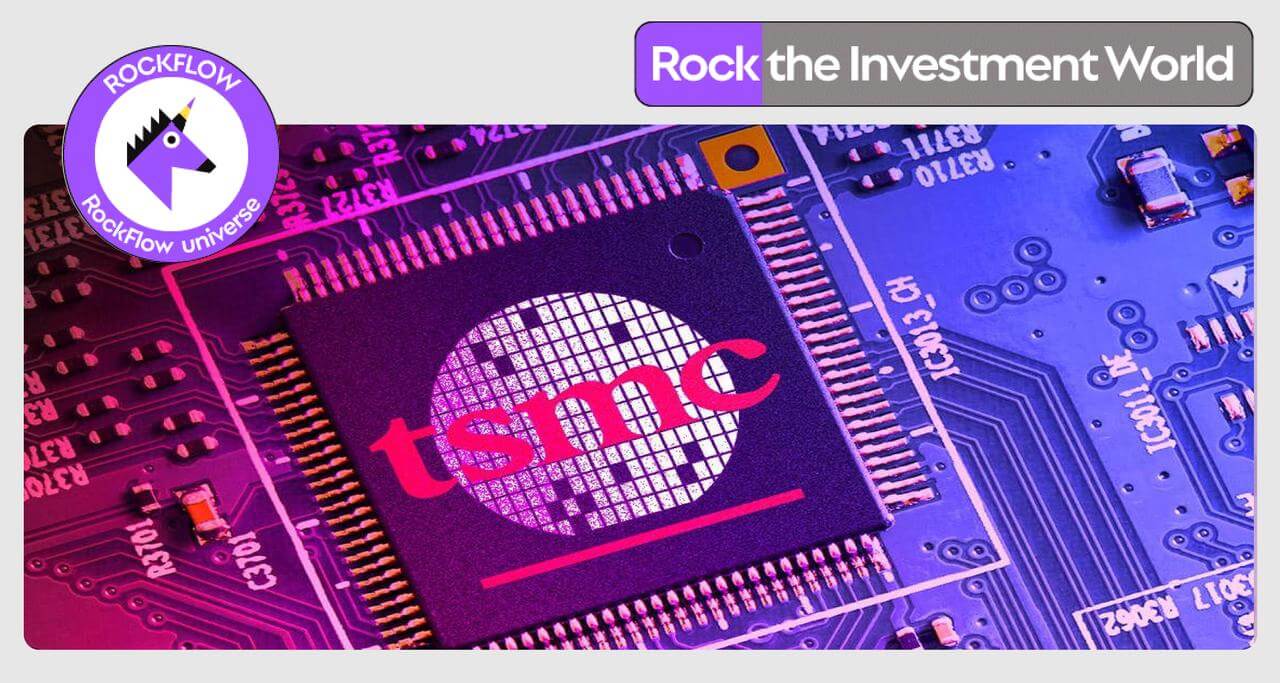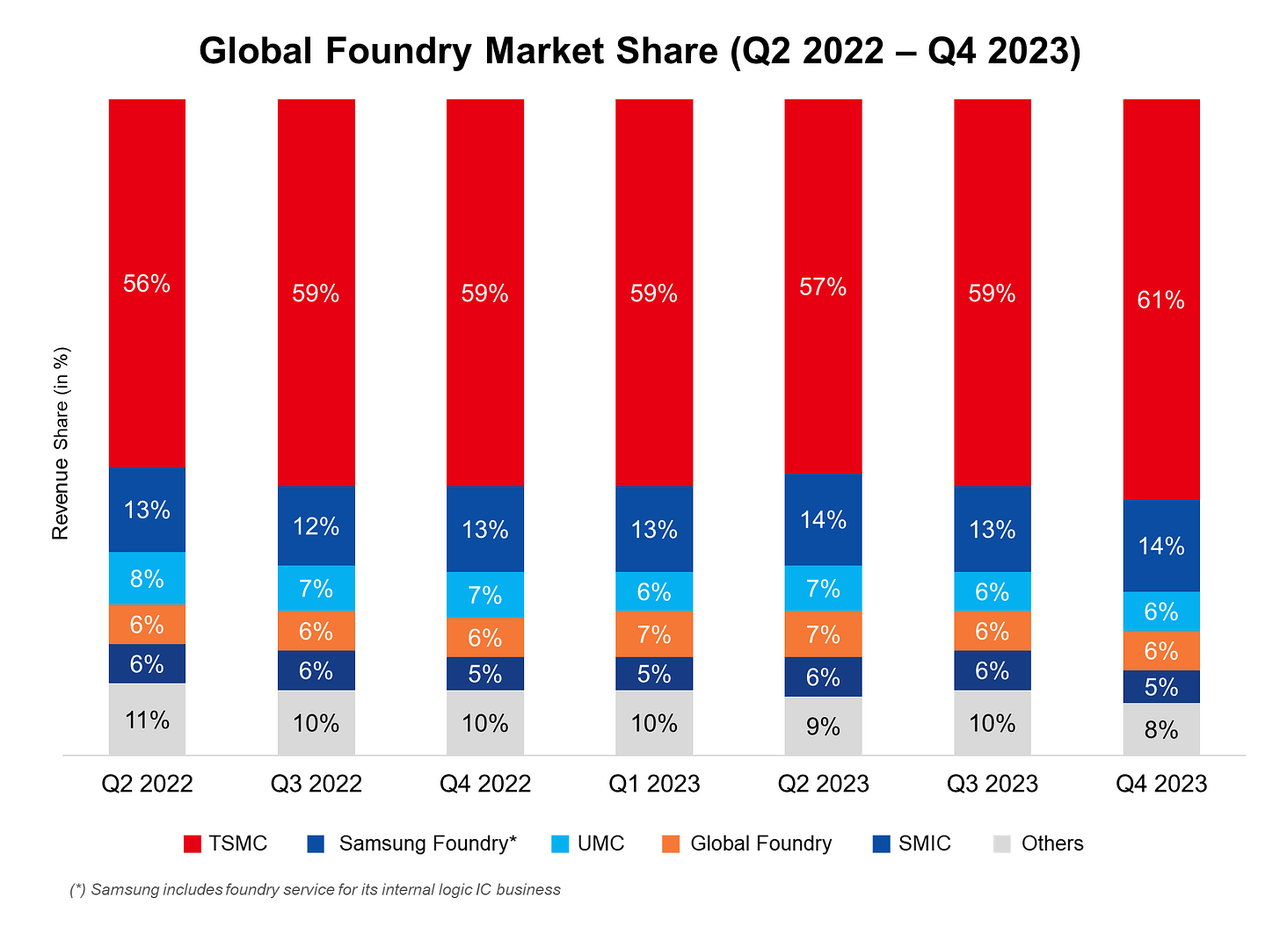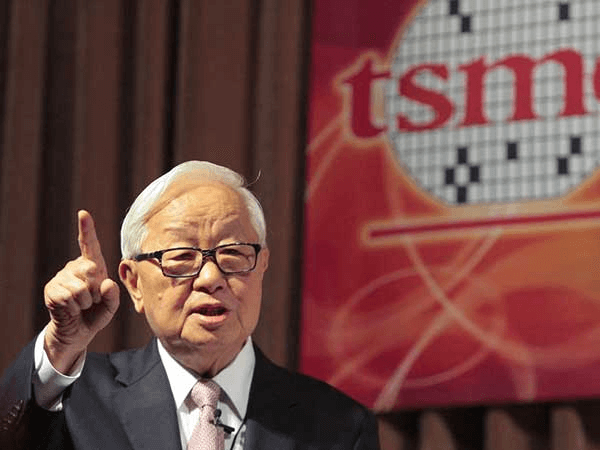
하이라이트:
반도체 산업의 기둥 기업인 TSMC는 전체 AI 불장과 기술 거대 기업들이 의존하는 칩 및 공급망 발전과 밀접한 관련이 있습니다. 글로벌 파운드리 시장 점유율의 60%와 최첨단 공정의 약 90%를 보유하고 있어 사실상 독점 지위를 차지하고 있습니다.
TSMC의 주가는 작년 10월 저점 이후 200% 이상 상승하여 시가총액 기준 세계 10대 기업 중 하나가 되었습니다. 경영진은 2024년 전망에 대해 매우 낙관적이며, 매출 성장률이 2020년부터 2022년까지의 반도체 호황 수준으로 회복될 것으로 믿고 있습니다.
1조 달러의 시가총액은 단지 시작점일 뿐입니다. 인공지능이 가져온 AI 칩 수요 급증으로 TSMC의 실적은 장기적으로 계속 상승할 것으로 예상됩니다. 인공지능 응용 프로그램의 규모가 계속 확대됨에 따라 TSMC는 여전히 가장 핵심적인 수혜자 중 하나입니다.
서론
미국 외에서 1조 달러 규모에 도달할 수 있는 기업은 거의 없지만, TSMC는 예외가 되려고 합니다. AI 붐과 강력한 칩 수요에 힘입어 TSMC의 주가는 작년 10월 저점 이후 200% 이상 상승하여 시가총액 기준 세계 10대 기업 중 하나가 되었으며, 시가총액은 1조 달러에 근접하고 있습니다.
TSMC는 얼마나 중요한가? 반도체 산업의 기둥 기업 중 하나로서 전체 AI 불장과 기술 거대 기업들이 의존하는 칩 및 공급망 발전과 밀접한 관련이 있습니다.
칩은 현대 인류 문명 어디에나 존재합니다. 세탁기부터 스마트폰까지, 칩은 필수적입니다. 작년 반도체 산업이 생산한 칩의 수는 인류 역사상 다른 모든 산업과 기업이 생산한 상품의 총합을 초과했습니다.
비록 반도체 산업 초기에는 거의 모든 기업이 파브(반도체 제조 시설)를 보유하고 있었지만, 그 이후 대부분의 칩 설계에 집중하는 기업들(예: NVIDIA와 같은 팹리스 기업)은 칩 제조를 파운드리에 아웃소싱하기로 선택했습니다.
오늘날 파운드리는 세계 칩의 대부분을 생산합니다. TSMC만으로도 글로벌 파운드리 시장의 약 60%를 차지합니다(아래 그림의 빨간색 부분).

더 중요한 것은 TSMC가 최첨단 노드(즉, 가장 작은 크기, 최고 밀도, 최고 정밀도가 필요한 제조 공정)에서 약 90%의 시장 점유율을 보유하고 있어 사실상 독점 지위를 차지하고 있다는 것입니다. 최첨단 노드는 슈퍼컴퓨터, 고급 서버, 고급 PC 및 스마트폰, 인공지능/머신러닝, 군사/국방 시스템과 같이 극도로 높은 컴퓨팅 성능이 필요한 응용 프로그램에 중요합니다. 따라서 TSMC의 중요성은 자명합니다.
RockFlow 투자 연구팀은 TSMC의 기원, 발전 과정, 현재 실적 및 재무 상태를 심층 분석하여 모든 사람이 그 투자 가치를 완전히 이해할 수 있도록 도울 것입니다.
RockFlow는 AI 개념 주식의 후속 발전과 최신 시장 동향을 계속 추적할 것입니다. 관련 기업의 발전 개요, 투자 가치 및 위험 요소에 대해 더 자세히 알고 싶다면 RockFlow의 이전 심층 분석 기사를 참조할 수 있습니다.
시작점 - 유일한 장점을 최대한 발휘하고 순수 웨이퍼 파운드리에 집중
스티브 잡스가 애플의 영혼이라면, 장중모는 TSMC의 전설적인 창조자입니다. TSMC와의 초기 역사를 이해해야만 오늘날의 TSMC를 더 잘 이해할 수 있습니다.
장중모는 전형적인 대기만성형 인물입니다. 55세에 TSMC를 설립했고, 74세에 은퇴할 때까지 거의 20년 동안 회사를 이끌었습니다.
그러나 그의 은퇴 생활은 짧았고, 2009년에 TSMC를 이끌기 위해 복귀했습니다. 복귀했을 때 TSMC의 시가총액은 400억 달러였습니다. 2018년 6월, 87세의 장중모가 다시 은퇴했을 때 TSMC의 시가총액은 거의 2,000억 달러에 달했습니다. 오늘날 TSMC의 시가총액은 1조 달러에 근접하고 있습니다.

55세에 검증되지 않은 비즈니스 모델을 믿고, 작은 회사를 세계에서 가장 중요한 거대 기업 중 하나로 만든다고 상상해보세요.
장중모는 중국에서 태어났습니다. 어릴 때 항일전쟁으로 가족과 함께 고향을 떠나 홍콩으로 갔습니다. 나중에 하버드에 합격하여 18세에 미국으로 이주했습니다. 2학년 때 MIT로 전학하여 기계 공학을 공부했습니다. 이후 3년 동안 학사 및 석사 학위를 완료한 후 MIT에서 박사 학위를 추구하기로 결정했지만 두 번 시험에 실패했습니다.
1955년, 장중모는 일자리를 찾기 시작했습니다. 그는 두 개의 제안을 받았습니다: 하나는 포드에서 월급 479달러였고, 다른 하나는 실바인 전자 제품(Sylvine Electric Products)에서 포드보다 1달러만 더 높은 월급을 제안받았습니다. 장중모는 후자를 선택하고 실바인의 새로 설립된 반도체 부서에서 일하기 시작했습니다.
기계 공학 배경 때문에 그는 전기 공학 지식을 빠르게 습득하기 위해 교과서를 독학하기로 결정했습니다. 트랜지스터의 아버지이자 실리콘 밸리의 전설인 윌리엄 쇼클리의 고전 작품을 공부하면서, 그는 교과서를 들고 바에 나타나 다른 동료들에게 음료를 사주며 책의 질문에 답할 수 있도록 했습니다.
장중모는 결국 실바인을 떠났지만, 당시 경영진의 회사 딜레마에 대한 생각을 잊지 않았습니다: "우리(실바인)는 판매할 수 있는 것을 생산할 수 없고, 생산할 수 있는 것을 판매할 수도 없습니다."
장중모는 1958년 텍사스 인스트루먼트(TI)에 합류했습니다. 같은 해, 잭 킬비가 TI에서 집적 회로(IC)를 발명했습니다.
TI에서 장중모의 초기 프로젝트는 매우 도전적이었습니다. IBM은 수요가 너무 높아 혼자서 완료할 수 없어 일부 칩 제조를 TI에 아웃소싱하기로 결정했습니다. 또한 IBM 자체 공장의 수율은 약 10%에 불과했는데, 이는 생산된 100개의 칩 중 90개를 폐기해야 한다는 것을 의미합니다.
장중모가 프로젝트에 배정되었을 때, TI의 수율은 거의 0%였습니다. 단 4개월 만에 그는 수율을 20%로 높였습니다. TI는 장중모의 잠재력을 인식하고 스탠포드에서 박사 학위를 취득하도록 적극적으로 자금을 지원했습니다. 이번에는 장중모가 단 2년 반 만에 박사 학위를 취득했습니다.
박사 학위를 취득한 후 장중모는 텍사스 인스트루먼트로 돌아가 반도체 부서의 총괄 매니저가 되었습니다. 5년 후 그는 부사장으로 승진했으며 다음 CEO의 인기 후보로 널리 알려졌습니다.
비록 장중모가 1962년에 미국 시민이 되었지만, 장중모가 중국계이기 때문에 TI의 CEO로 임명되지 않았을 수 있다는 소문이 있습니다.
TI에서 거의 30년 동안 일한 후, 장중모는 제너럴 인스트루먼트로 전환하여 COO가 되었습니다. 18개월 후 그는 그 자리에서 사임했습니다. 거의 동시에 그의 첫 번째 결혼도 끝이 났습니다. 장중모가 개인적이고 전문적인 도전에 고군분투하는 동안, 나중에 "대만 경제 기적의 아버지"로 알려진 이국정이 장중모를 대만의 산업기술연구원(ITRI)을 이끌도록 초대했는데, 이는 벨 연구소와 같은 연구 기관이 될 예정이었습니다. 장중모는 이것이 자신이 은퇴할 곳이라고 생각했습니다.
하지만 이국정이 그에게 새로운 임무를 부여했을 때, 모든 것이 바뀌었습니다.
이국정은 장중모에게 대만에서 새로운 반도체 회사를 시작하고 글로벌 리더로 만들라고 요청했습니다.
비록 대만이 당시에는 발전하지 않았지만, 반도체 산업에 낯선 것은 아니었습니다. 당시 대만 기업들이 수행한 역할의 부가가치는 매우 낮았으며, 총이익률은 약 4-5%였습니다. 장중모가 사업 계획을 수립했을 때, 그는 신규 회사에 대한 유일한 실행 가능한 경로가 순수 OEM일 수 있다는 것을 깨달았습니다. 다음은 장중모 자신의 생각입니다:
이국정 선생님이 제게 부여한 임무에 대해 멈춰서 생각했을 때, 한 가지 아이디어가 떠올랐습니다. 대만에 오기 전에 저는 30년 동안 반도체 산업에서 일해왔습니다. 이 산업의 경쟁이 얼마나 치열한지 잘 알고 있으며, 일부 기업은 매우 우수합니다 - 인텔과 텍사스 인스트루먼트와 같은 기업들입니다. 일본 기업들도 매우 강력합니다. 새로운 대만 기업이 이름을 알리기는 매우 어렵습니다.
그래서 저는 대만에 무엇이 있는지 연구하려고 했습니다. 제 결론은 우리가 가진 것이 매우 적다는 것입니다. 연구 개발에는 장점이 없거나 매우 적고, 회로 설계, IC 제품 설계에는 장점이 없으며, 판매 및 마케팅에는 장점이 없으며, IP에는 거의 장점이 없습니다.
대만의 유일한 가능한 장점은 반도체 제조 및 웨이퍼 제조입니다. 그렇다면 이 장점을 활용하고 다른 모든 약점을 피하기 위해 어떤 종류의 회사를 만들어야 할까요? 답은 순수 웨이퍼 파운드리입니다.
TSMC는 어떻게 대만의 자랑이 되었을까?
비록 장중모가 이 결론에 도달했지만, 이를 실행하는 것은 쉽지 않습니다. 당시 전통적인 견해는 "우수한 반도체 회사는 아웃소싱 대신 자체 칩을 생산해야 한다"는 것이었습니다. 그러나 시장에서 칩에 대한 수요가 증가함에 따라 통합 장비 제조업체(IDM, 설계 및 제조를 모두 수행하는 기업)는 일부 제조 수요를 파운드리에 아웃소싱하는 데 동의합니다.
"잉여" 수요와 비즈니스 모델의 많은 불확실성에도 불구하고, 대만은 장중모가 필요로 하는 2억 2천만 달러의 절반을 기여하기로 결정했습니다. 나머지 28%는 네덜란드의 유명 전자 제조업체인 필립스에서 나왔으며, 이는 ASM과 함께 글로벌 리소그래피 거대 기업 ASM을 공동 설립한 기업입니다. 나머지 22%는 여러 대만 비즈니스 리더들로부터 나왔으며, 이들은 기본적으로 정부의 위임을 받아 투자한 것입니다.
TSMC는 1987년에 공식적으로 설립되었습니다. 발전 초기에 이 회사는 논란의 여지가 있는 "선도 비용 곡선" 가격 책정 방식을 선구했습니다. 이 방식의 개념은 더 많은 생산을 얻기 위해 낮은 이익률로 새 칩에 가격을 책정한 다음, 생산을 늘리고 기술 효율을 최적화하여 더 높은 이익률 주문을 얻는 것이었습니다.
처음 몇 년 동안 TSMC는 주로 IDM의 "잉여" 주문을 생산했으며, 실제로 사업 성장을 이끈 것은 팹리스 공장의 부상 추세였습니다. 특히 NVIDIA, 퀄컴, 브로드컴과 같이 TSMC와 동시에 설립되었지만 자체 설계한 칩을 생산하는 웨이퍼 공장이 없어 제조 운영을 아웃소싱하기를 희망했던 기업들입니다.
TSMC는 오랫동안 고객 서비스 및 지원을 매우 중시해왔습니다. 전담 고객 지원 팀을 구성하여 고객과 긴밀히 협력하고, 그들의 요구를 이해하며, 칩 설계를 최적화하는 데 도움을 줍니다. TSMC는 또한 패키징 및 테스트와 같은 다양한 부가가치 서비스를 제공하여 고객이 제품을 빠르고 효율적으로 시장에 출시할 수 있도록 돕습니다.
TSMC 비즈니스 모델의 또 다른 핵심 장점은 계약 제조에 집중한다는 것입니다. 자체 칩을 설계하거나 판매하지 않고, 단순히 칩을 설계하고 판매하는 고객에게 제조 서비스를 제공합니다. 이를 통해 TSMC는 칩 제조에서 핵심 경쟁력을 집중할 수 있으며, 동시에 고객에게 고급 용량을 제공할 수 있습니다.
팹리스 공장의 수가 몇 개에서 수백 개 또는 수천 개로 증가함에 따라 TSMC의 매출은 계속 성장했습니다. TSMC는 1994년에 대만에서 상장했으며 시가총액은 40억 달러였습니다. 이후 1997년에 미국에서 상장했습니다.
나중에 TSMC의 공정 노드가 더욱 발전함에 따라 고객들은 더 높은 시장 점유율을 만나고 차지할 수 있었으며, 이는 TSMC의 칩 제조 능력에 대한 더 큰 수요를 만들었습니다. 비록 처음에는 상당한 기술적 불리함에 있었지만, 오래지 않아 동료들을 따라잡았고 몇 년 안에 점차 모든 사람을 능가했습니다.
다음 차트는 다양한 시기 동안 반도체 산업의 주류 기업들이 고급 노드에 대한 수요의 진화를 보여줍니다. 2002년부터 2003년까지 130nm 칩이 주류였으며, 시장에는 26개의 파운드리가 있었습니다. 그런 다음 평균적으로 2년마다 칩 규모가 감소하고, 생산 공정 요구 사항이 증가하며, 플레이어들이 제거되었습니다. 이 과정에서 TSMC는 항상 가장 최첨단 제조 공정을 마스터했습니다.

2005년 TSMC의 매출은 약 80억 달러였고 영업 이익은 28억 달러였으며, 사업 기반이 상당히 견고해 보였습니다. 장중모는 당시 74세였으며 은퇴하고 리더십 자리를 채려행에게 넘기기로 결정했습니다.
그러나 이 은퇴는 일시적인 것으로 판명되었습니다. 2009년 여름, 78세의 장중모는 채려행을 대체하고 TSMC로 돌아가기로 결정했습니다.
비록 당시 경제는 여전히 글로벌 금융 위기의 영향을 받고 있었지만, iPhone과 스마트폰은 이미 2000년대 후반에 등장했습니다. 경쟁자들이 이러한 거시적 맥락에서 대규모 투자를 망설였을 때, 장중모는 적극적으로 투자하고 경쟁자들과 거리를 두기로 결정했습니다.
TSMC의 2005-2009년 누적 자본 지출은 120억 달러에 불과했지만, 장중모가 TSMC로 돌아온 후 2010-2014년 기간 동안 TSMC의 누적 자본 지출은 400억 달러에 달했습니다.
이것은 또한 TSMC가 애플과 긴밀한 관계를 구축하기 시작한 시기입니다. iPhone 6S 이전에는 애플이 공급업체 다각화를 달성하기 위해 삼성과 TSMC 사이에서 제조 책임을 나누었습니다. 하지만 그 이후로 TSMC는 애플의 거의 모든 사업을 획득했습니다: iPhone, iPad 및 Mac. 현재 애플은 TSMC의 최대 고객이며, 이 회사만으로도 2023년 TSMC에 약 180억 달러의 매출을 창출할 것입니다.
장중모는 2013년에 TSMC의 CEO로 사임했지만 여전히 의장을 맡고 있습니다. 그는 회사 설립 이후 30년 동안 회사를 위해 일했으며 마침내 2018년에 이사회를 떠났습니다.
성장 궤도로 복귀, TSMC의 재무 실적은 계속 좋은 결과를 달성할 것으로 예상
2023년 10년 이상 만에 가장 큰 순환 조정을 경험한 후, 이 선도적인 칩 파운드리는 2024년 전망에 대해 매우 낙관적입니다. 경영진은 매출 성장률이 2020년부터 2022년까지의 반도체 호황 기간 수준으로 회복될 것이라고 밝혔습니다. 향후 3년간의 매출 및 성장률은 다음 그림에 나와 있습니다.
TSMC의 2024년 매출 성장은 주로 더 고급 기술로의 전환, 특히 업계를 선도하는 3nm 칩의 신흥 성장, 그리고 시장에서 5nm 및 7nm 칩에 대한 장기적인 강한 수요 때문입니다(아래 그림의 보라색, 녹색 및 파란색 부분).
TSMC CEO 위저지아는 또한 2023년 재무 보고서 컨퍼런스 콜에서 회사가 최신 N3 노드 실행에 큰 베팅을 하고 있다고 밝혔습니다.
우리의 3nm 기술은 PPA 및 트랜지스터 기술에서 가장 고급 반도체 기술입니다. 따라서 거의 모든 글로벌 스마트폰 및 HPC 혁신 기업들이 TSMC와 협력하고 있습니다. N3E는 견고한 기반을 더욱 활용하여 N3 시리즈를 확장하고, 성능, 전력 및 출력을 개선합니다. N3E는 2023년 4분기에 양산에 들어갔습니다.
스마트폰 및 HPC 응용 영역 고객의 강한 수요로 인해, 우리는 2024년까지 3nm 기술의 매출이 두 배 이상 증가할 것으로 예상합니다. 3nm 공정 기술에 대한 전략을 계속 강화함에 따라, 우리는 강한 다년간 고객 수요를 예상하며, 우리의 3nm 시리즈가 TSMC의 또 다른 크고 지속적인 노드가 될 것이라고 믿습니다.
위저지아는 N3 이후 TSMC가 2025년에 N2 양산을 달성할 것으로 예상된다고 밝혔습니다.
그러나 N3 사업의 성장으로 인해 회사는 향후 이익 마진에 대한 영향을 설명했습니다. TSMC의 CFO는 다음과 같이 설명했습니다:
긍정적인 측면에서, 사업이 회복됨에 따라 우리는 2024년 이익 마진이 증가할 것으로 예상합니다. 그러나 N3의 매출 기여도가 2023년보다 훨씬 높을 것이기 때문에, 우리는 2024년 전체 연도의 N3 총이익률이 약 3-4% 포인트 희석될 것으로 예상합니다. 우리의 전략은 중장기적으로 더 높은 자본 효율을 달성할 것으로 예상되지만, 단기적으로는 저항을 극복해야 합니다. 장기적으로 우리는 계속해서 53% 이상의 총이익률을 예측합니다.
물론 TSMC는 현재 일부 위험과 도전 과제를 처리해야 합니다. 첫 번째 핵심 위험은 계약 제조업체와 자체 칩을 생산하는 칩 제조업체를 포함한 다른 반도체 제조업체의 경쟁입니다. 그러나 TSMC는 오랫동안 기술적 우위를 유지할 수 있으며, 견고한 기술을 축적하고, 기본적으로 "무어의 법칙"을 따르며, 차례로 다양한 나노 수준 기술을 출시할 수 있습니다(최신은 3nm, 2nm 등). 공정이든 공장 건설이든, 단계별 경험 전수이며, 경쟁자들은 기본적으로 커브에서 추월을 달성할 수 없습니다.
또한 회사는 지정학적 위험을 관리해야 하며, 이것이 가장 큰 블랙 스완입니다. 공급망 보안을 보장하기 위해 TSMC의 전략은 반세계화 추세를 따르는 것입니다. 전 세계 여러 주요 국가와 지역(예: 미국의 애리조나, 일본의 구마모토, 독일의 작센 등)을 선택하여 국제화 생산 능력을 배치했습니다. 동시에 기술적 리더십을 유지하기 위해 TSMC는 N-1 개발 전략을 구현하여 대만 현지 양산 기술보다 한 세대 낮은 해외 공정 기술을 도입하고, 가장 고급 기술을 대만에 유지합니다.
결론
RockFlow 연구팀은 반도체 산업의 글로벌 리더로서 TSMC가 안정적인 비즈니스 모델과 우수한 실적을 가지고 있다고 믿습니다. 이 회사는 오랫동안 글로벌 칩 제조 기술 개선 및 혁신의 최전선에 있었으며, 초고 수율과 가장 고급 공정으로 글로벌 칩 파운드리 주문의 대부분을 획득했습니다.
현재 시가총액이 1조 달러에 근접한 TSMC는 여전히 상승 중입니다. 인공지능이 가져온 AI 칩 수요 급증으로 실적은 장기적으로 계속 상승할 것으로 예상되며, 이는 회사의 주가를 크게 상승시킬 것입니다. 인공지능 응용 프로그램의 규모가 계속 확대됨에 따라 TSMC는 여전히 가장 핵심적인 수혜자 중 하나입니다.
저자 프로필
RockFlow 연구팀은 미국 주식 시장의 고품질 기업뿐만 아니라 라틴 아메리카 및 동남아시아와 같은 신흥 시장에 대한 장기 분석에 전문성을 가지고 있으며, 암호화폐, 생명 공학 등과 같은 고성장 잠재 산업에 초점을 맞추고 있습니다. 팀의 핵심 멤버는 페이스북, 바이두, 바이트댄스, 화웨이, 골드만삭스, CITIC 증권을 포함한 최고의 기술 기업 및 금융 기관 출신입니다. 그들 중 많은 사람들이 매사추세츠 공과대학(MIT), 캘리포니아 대학교 버클리, 난양 기술 대학, 칭화 대학교, 푸단 대학교와 같은 명문 대학을 졸업했습니다.
다음 플랫폼에서도 저희를 찾을 수 있습니다: